The Colonia Augusta Rauricorum (Augusta Raurica) was founded by Lucio Munacio Planco, one of the most slippery politicians of the late Republic and early Empire, in the summer of 44 BC. on the south bank of the Rhine, near the modern city of Basel in northern Switzerland. We know the exact year because this is indicated by the inscription on Planco's own tomb in Gaeta, Italy.
The original name under which Planco founded it, Colonia Raurica , indicates its establishment in the territory of the local Gallic tribe of the Ráuracos, whom Julius Caesar had defeated in the battle of Bibracte together with the Helvetii in 58 BC.
But the foundation of Planco did not prosper, and it would be necessary to wait for the conquest of the central Alps by Augustus in 15 BC, in which it was one of the key points, for the city to fully develop. This refoundation by Augustus (as a colony of veterans) would cause the name to be extended to Colonia Paterna Munatia Felix Apollinaris Augusta Emérita Raurica .
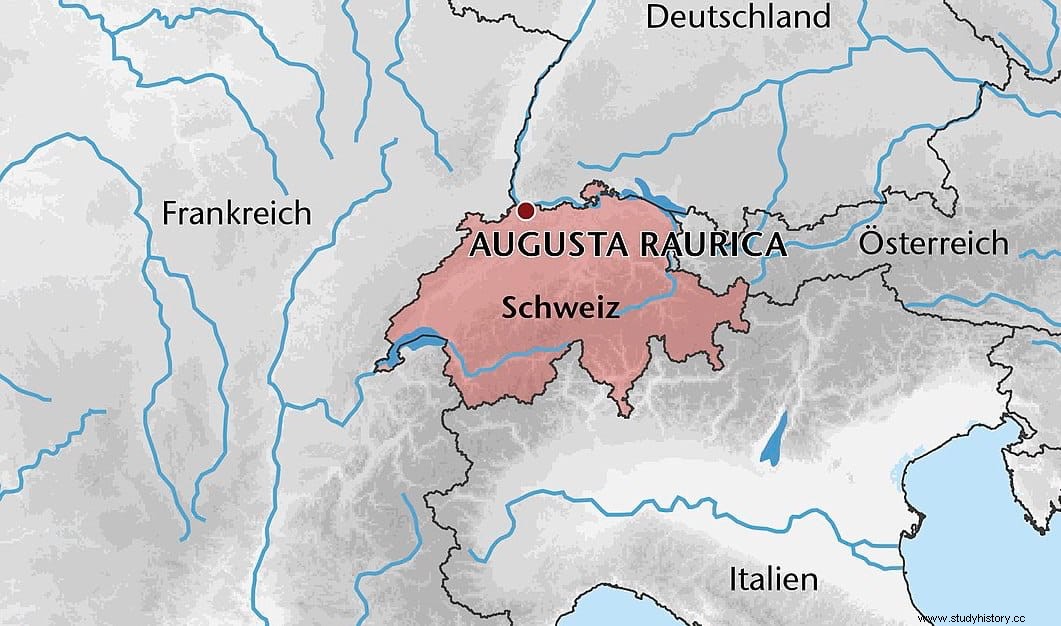
It was flanked by two streams, which had formed a plateau with steep slopes, which provided the city with natural protection and a wide view over the Rhine plain. The upper part was based on a spur, while the lower part was arranged in the plain along the river.
From the 2nd century AD it is already an important commercial center and capital of a local Roman province, with a population of around 20,000. The Rhine connected the city by water with the northwest. By land, the road that came from the north of the Italian peninsula crossed with the east-west road that led from Gaul to Raetia and Pannonia.
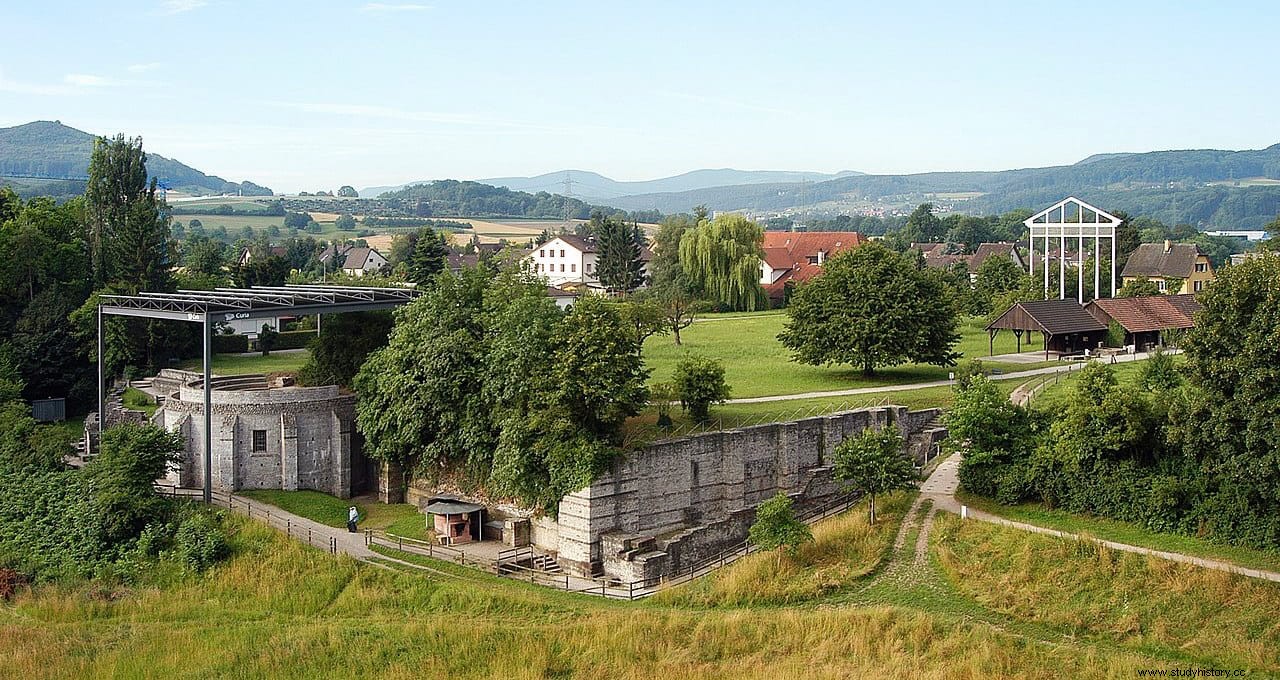
Its main exports to other parts of the empire were smoked pork and bacon, although it is believed that it also produced ceramic bricks.
It had all the comforts of a typical Roman city:an amphitheater, a main forum and several secondary ones, an aqueduct, temples, baths and public baths, and, in addition, the largest Roman theater north of the Alps, with a capacity for about 10,000 spectators. 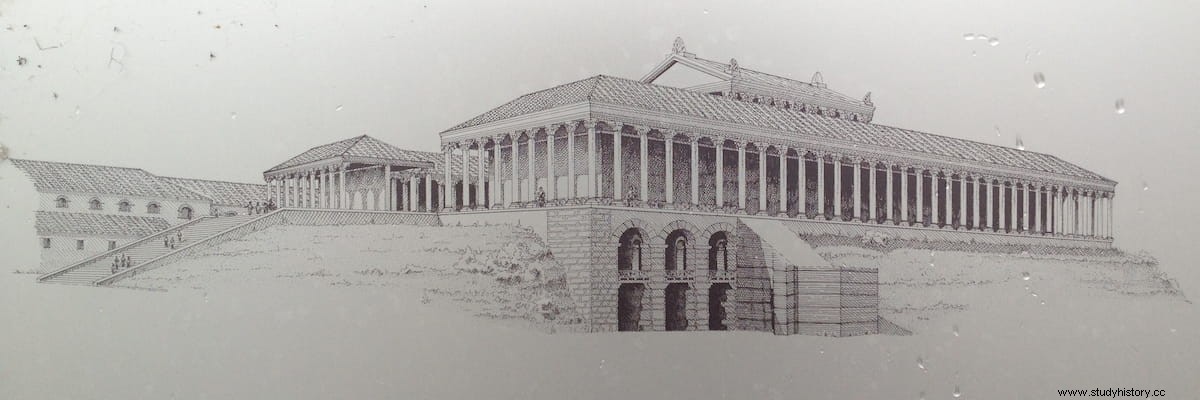
In the year 250 AD an earthquake damaged much of the city, which was destroyed a decade later by Germanic tribes. In the excavations of the streets of the upper part, weapons and remains were found that indicate that there was fighting inside the city.
The population, already greatly reduced, retreated to a natural spur on the edge of the upper city, which was fortified using materials from the public and private structures of the old city. This was only a temporary solution, as around 290 AD. construction began on a new fortified settlement in the lower town area.
This settlement is known as the Castrum rauracense , and their mission was to secure the bridge over the Rhine. The Roman troops of the Legio I Martia they remained quartered there until the first half of the 5th century AD
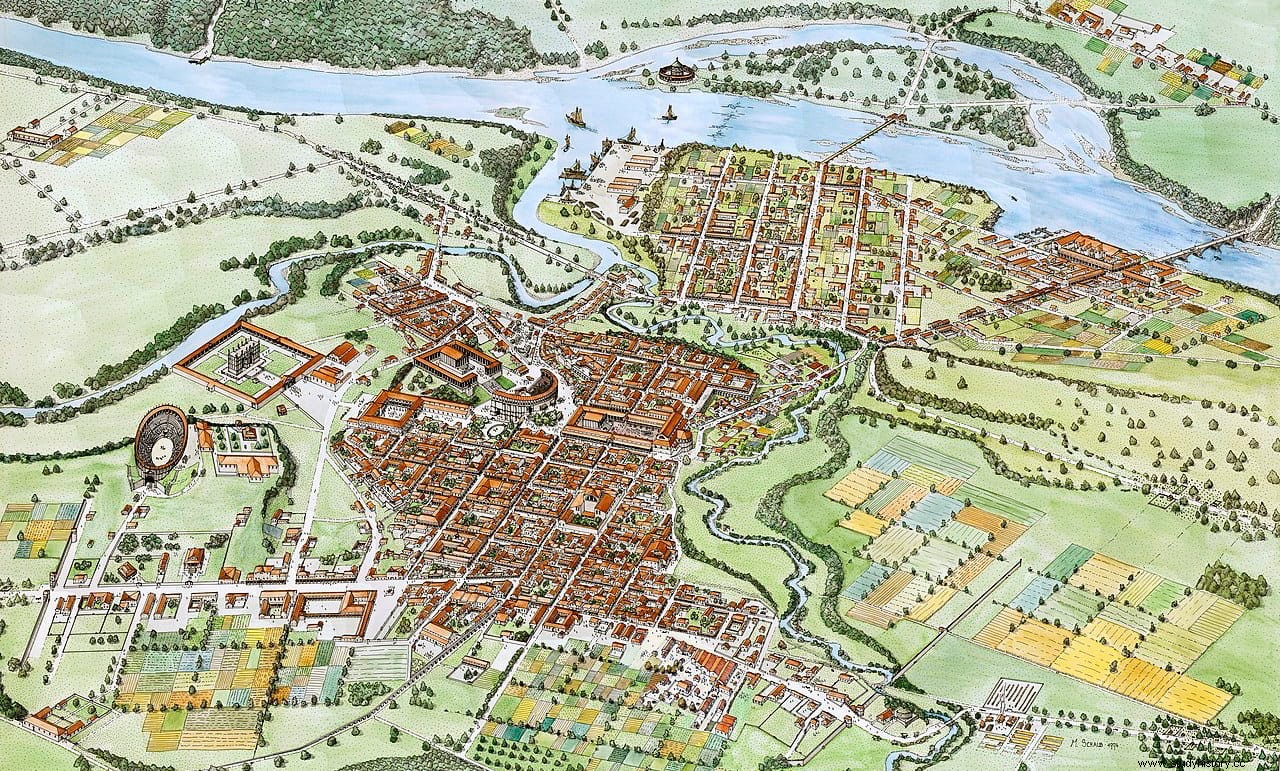
Then, from the 7th century onwards, the medieval city (in which the Franks already predominate) would lose importance and decline in favor of nearby Basel, whose constructions used materials from the buildings of Augusta Raurica.
The original settlement of Augusta Raurica gave rise to the current town of Augst, and the fort to that of Kaiseraugst. Excavations have brought to light many of the Roman constructions, such as the amphitheater, the theater, the aqueduct, the main forum with the temple of Jupiter and a basilica, as well as a tavern, a bakery, and pottery and ceramic workshops.
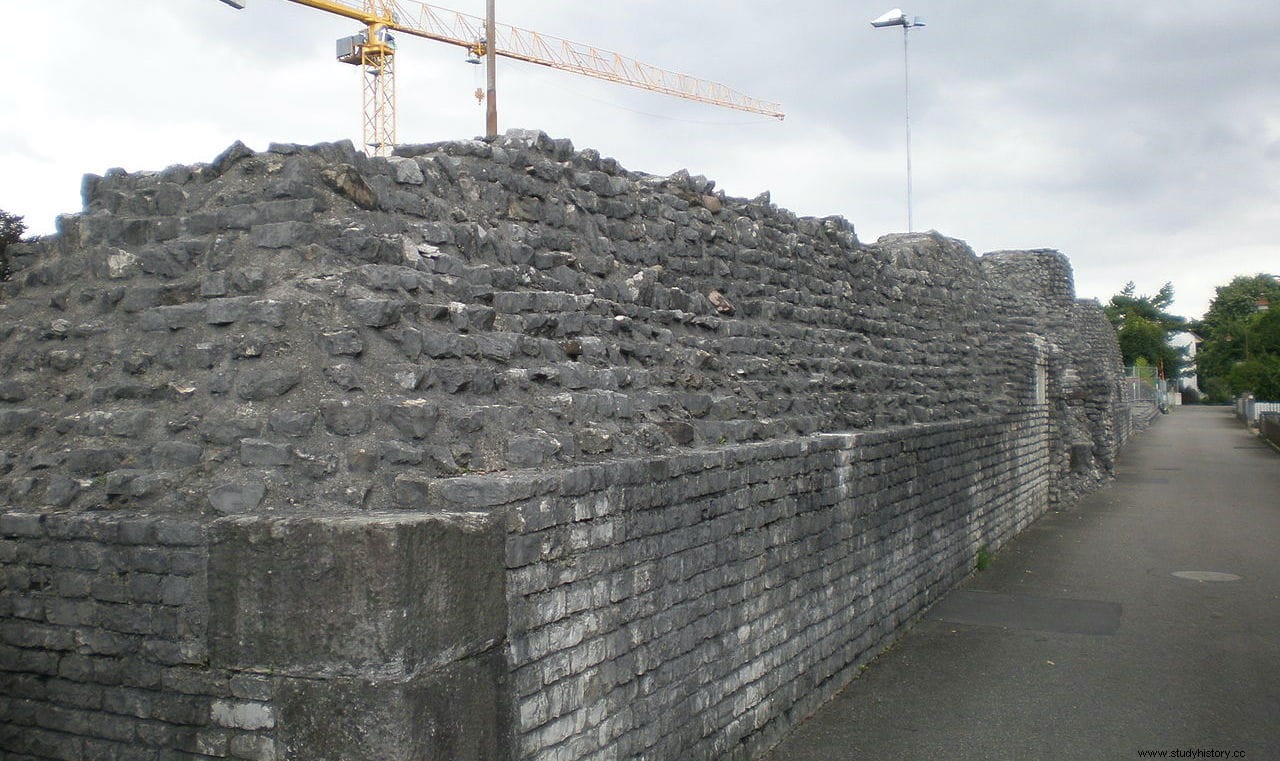
But only 20 percent of the ancient city has been excavated to date. There are two permanent archaeological teams, one in Augst and one in Kaiseraugst, which carry out surveys throughout the year.
Augusta Raurica is the best preserved Roman city north of the Alps (not rebuilt in later times).
Converted into a large archaeological park, it has a museum, reconstructions of Roman houses and even historical recreation shows.
